CrashGuard
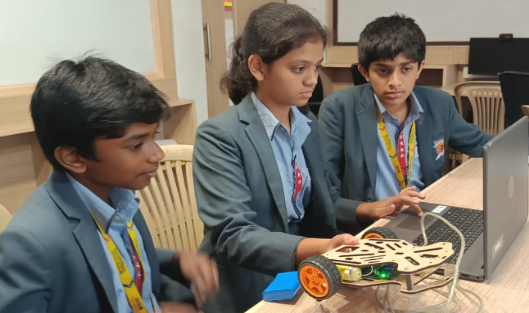
CrashGuard is an AI-powered vehicle safety system designed to prevent accidents caused by drowsy driving.
• It uses a machine learning model trained in Pictoblox to monitor the driver’s eye movements using a webcam.
FurEver Buddy
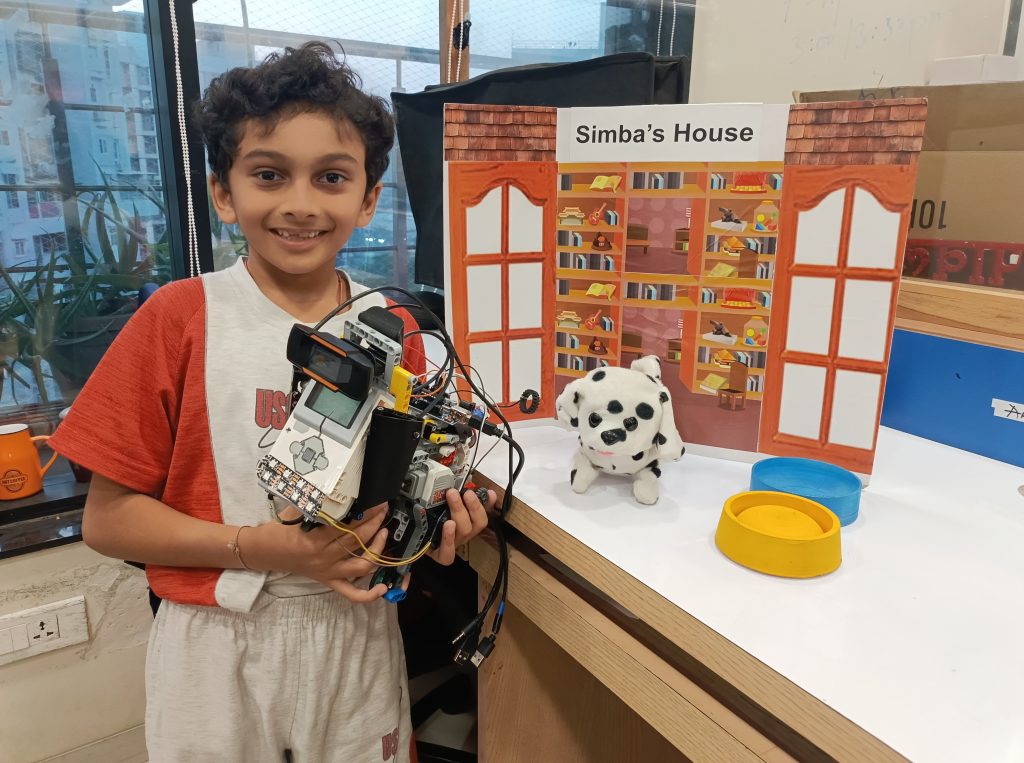
FurEver Buddy is a project to help working professionals to take care of their fur member of family in the field of feeling of separation, aggression and sadness.
Drowning Rescue System
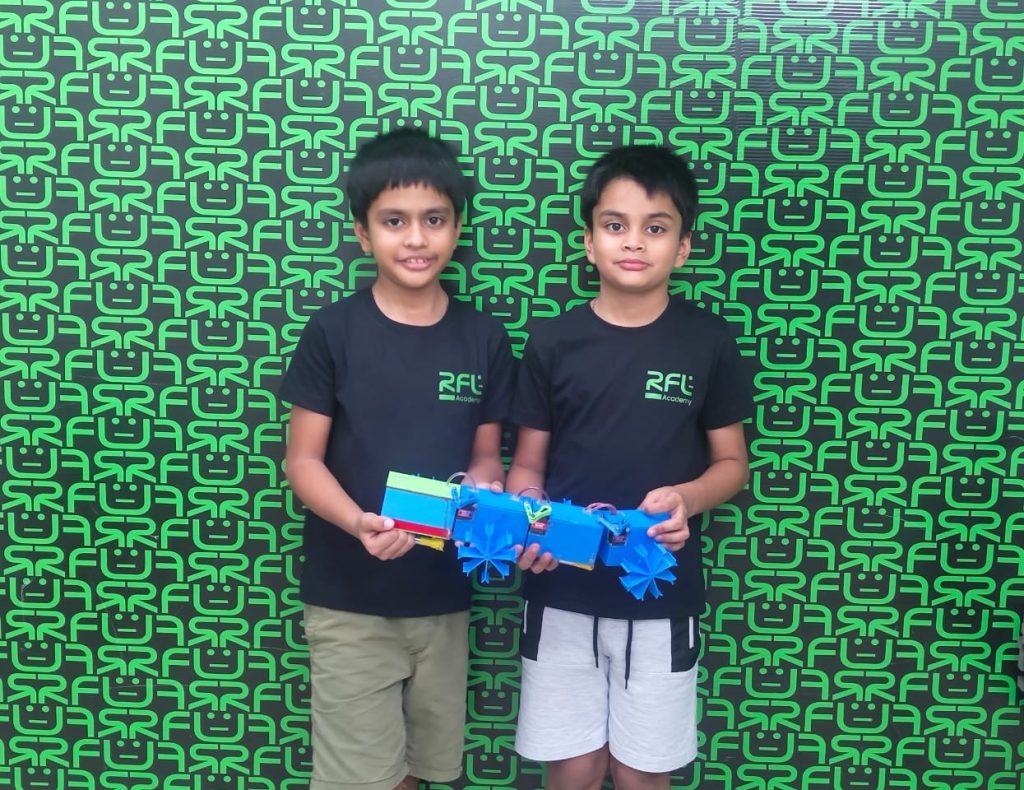
Our project introduces an innovative solution for rescuing drowning individuals, addressing the urgent need for faster, more effective rescue operations. The system utilizes a Quarky Board controlled via Bluetooth through the Dabble app, a unique approach to enhance user control and flexibility. What sets this project apart is the use of four floatable boxes, each equipped with a DC motor and propeller, enabling autonomous movement toward the drowning person. Upon reaching the individual, three servo motors rotate the boxes to ensure precise and safe positioning for rescue. The system’s innovation lies in its efficient use of an expansion board to connect additional motors and servos, overcoming the Quarky Board’s limitations. This setup drastically improves response times and rescue effectiveness, making it a cutting-edge solution for drowning prevention and rescue.
Automatic Rice Stubble Collector
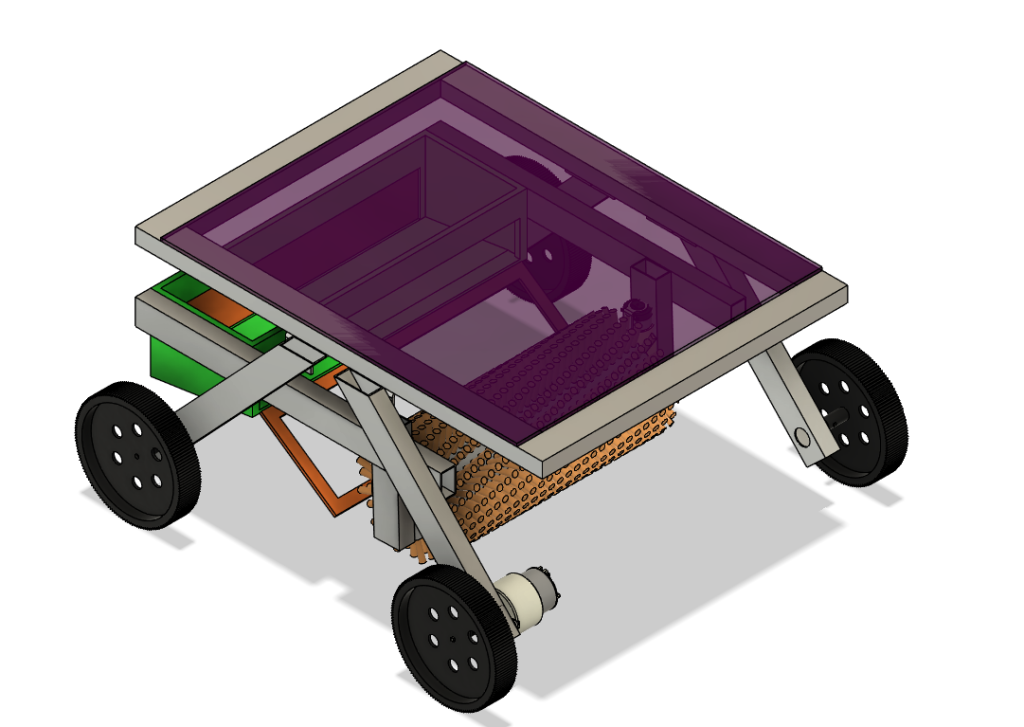
The Automatic Rice Stubble Collector is a device designed to help farmers efficiently gather rice stubble and place it in a designated corner for easy collection and sale to biofuel companies. This innovation aims to reduce manual labor and promote sustainable agricultural waste management.
Smart Sign Language Tutor
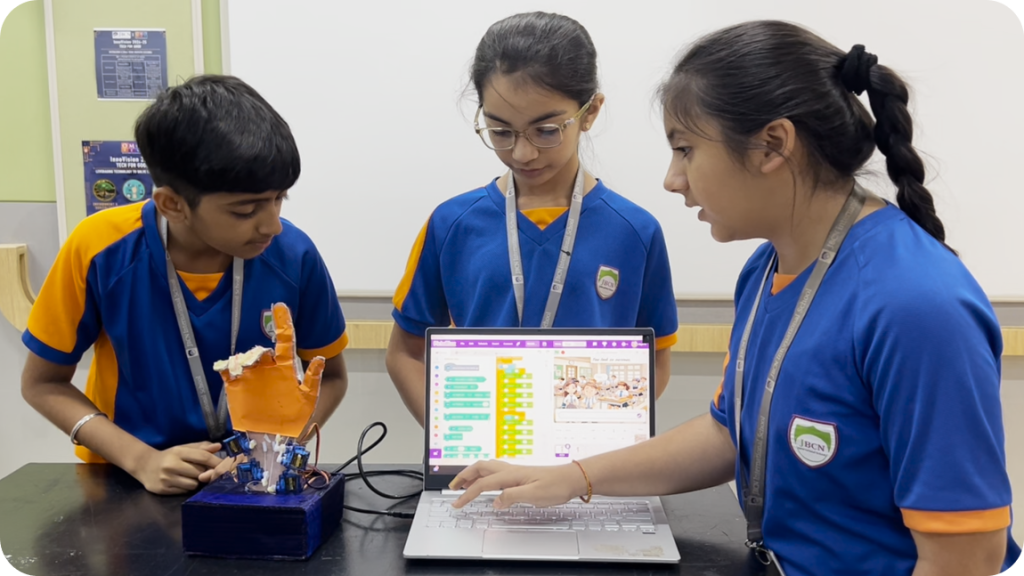
Our project aims to develop a Smart Sign Language Robotic Hand that translates text input into sign language gestures using Pictoblox, Arduino, and Servo Motors.
Smart Trffic Management System
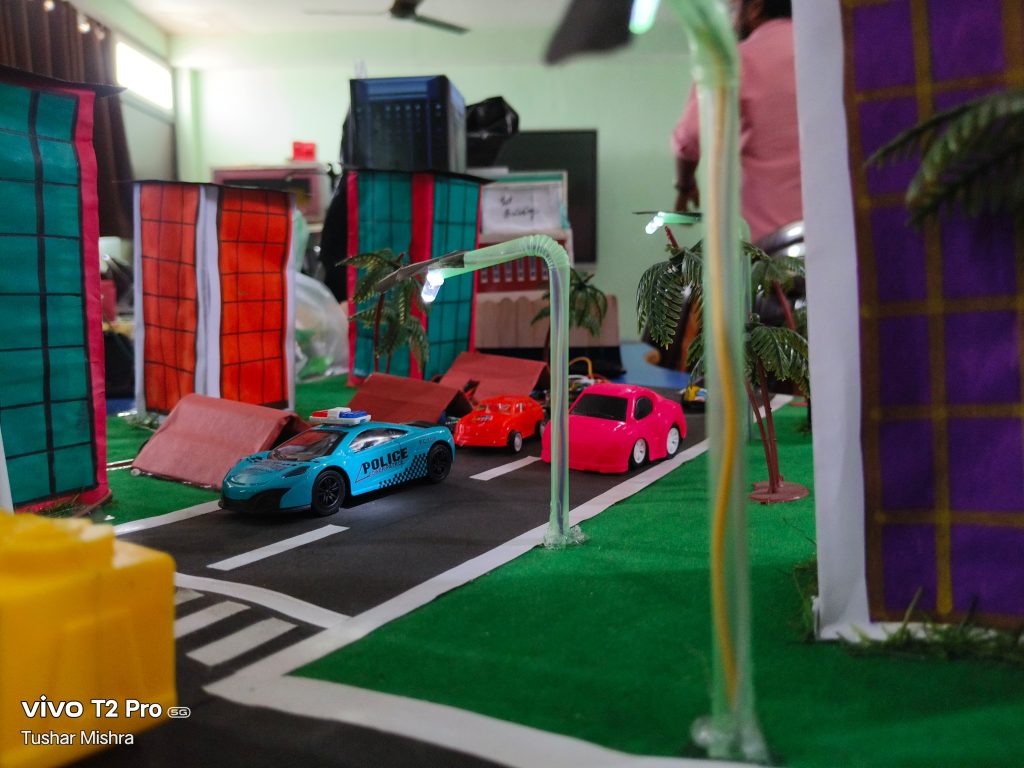
Project Title: Smart Traffic Management System (STMS)
Objective:
The objective of the Smart Traffic Management System (STMS) is to enhance traffic flow, reduce congestion, improve safety, and lower the environmental impact caused by traffic inefficiencies. By integrating advanced technologies such as sensors, IoT (Internet of Things), machine learning, and real-time data analysis, the system aims to provide a dynamic solution for managing urban traffic.
Problem Statement:
With the rise of urban populations and increased vehicular density, cities worldwide are facing significant challenges in managing traffic effectively. The traditional traffic management systems often rely on fixed traffic lights and manual monitoring, leading to traffic congestion, accidents, inefficient fuel usage, and time wastage. There is a growing need for an adaptive system that can respond to real-time traffic conditions and optimize the flow of vehicles.
Proposed Solution:
The Smart Traffic Management System will utilize a combination of real-time traffic data, smart sensors, AI algorithms, and cloud-based platforms to dynamically control traffic signals, monitor traffic conditions, and manage traffic patterns. The key components of the system include:
Smart Traffic Lights:
Traffic signals will adapt in real-time based on the traffic flow data, reducing wait times and improving traffic movement. Machine learning algorithms will predict traffic volume at different times of day and adjust the signal timings accordingly.
IoT& IR Sensors:
IoT-enabled sensors (such as cameras, radar, and inductive loops) will be deployed on roads to detect vehicle count, speed, and traffic density. These sensors will send continuous real-time data to the central management system.
Expected Outcomes:
Improved Traffic Flow: More efficient traffic management leading to reduced travel time and smoother vehicle movement.
Enhanced Public Satisfaction: Commuters will benefit from reduced congestion and faster travel times.
Smart City Integration: The system can be integrated with broader smart city initiatives, providing valuable data for urban planning and management.
Conclusion:
The Smart Traffic Management System represents a significant step forward in utilizing technology to solve urban traffic problems. By combining IoT, AI, and data analytics, this system promises to transform how cities manage their traffic, offering benefits like reduced congestion, improved road safety, and better overall efficiency for both commuters and city authorities.
Laser Weed AI
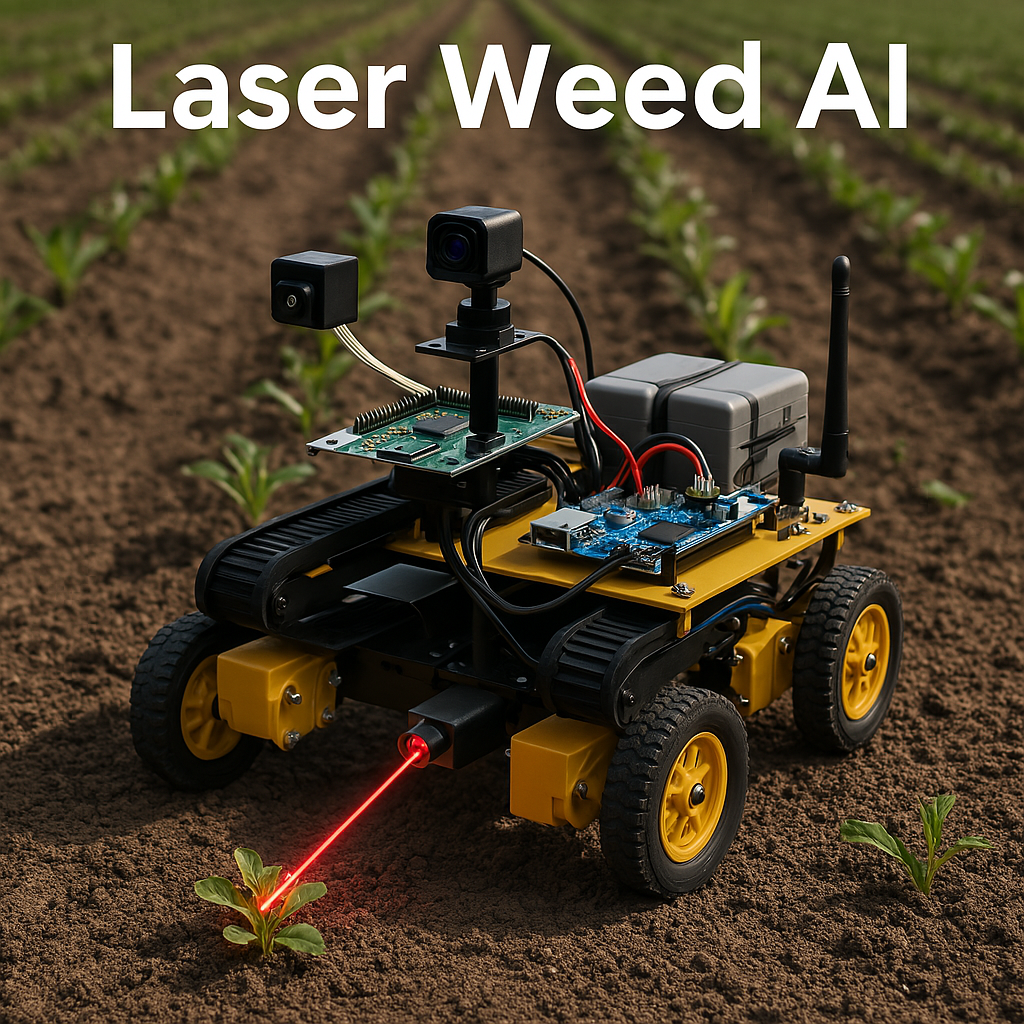
Laser Weed AI is an AI-powered robotic system designed to detect and remove weeds efficiently in agriculture. Using a Raspberry Pi with a Raspberry Pi Camera, it analyzes real-time images and identifies weeds through machine learning. A 5W Laser Module eliminates unwanted weeds with precision, reducing the need for chemical herbicides. The robot moves on a chassis powered by 4 Geared DC Motors, while conveyor belts help in weed removal. An Arduino UNO with an RF Module allows manual control when needed. The system is powered by 2 x 12V Lithium-ion Battery Packs, ensuring extended operation. This innovative solution minimizes labor, reduces chemical use, and promotes eco-friendly farming. With AI-driven automation, Laser Weed AI supports sustainable agriculture, enhances crop yields, and improves farming efficiency. By integrating technology with agriculture, it offers an advanced, environmentally friendly method for modern weed management, ensuring long-term benefits for farmers and healthier, chemical-free organic crops. 🚜🌱✨
NEXT MILE – ROAD SIDE SAFETY
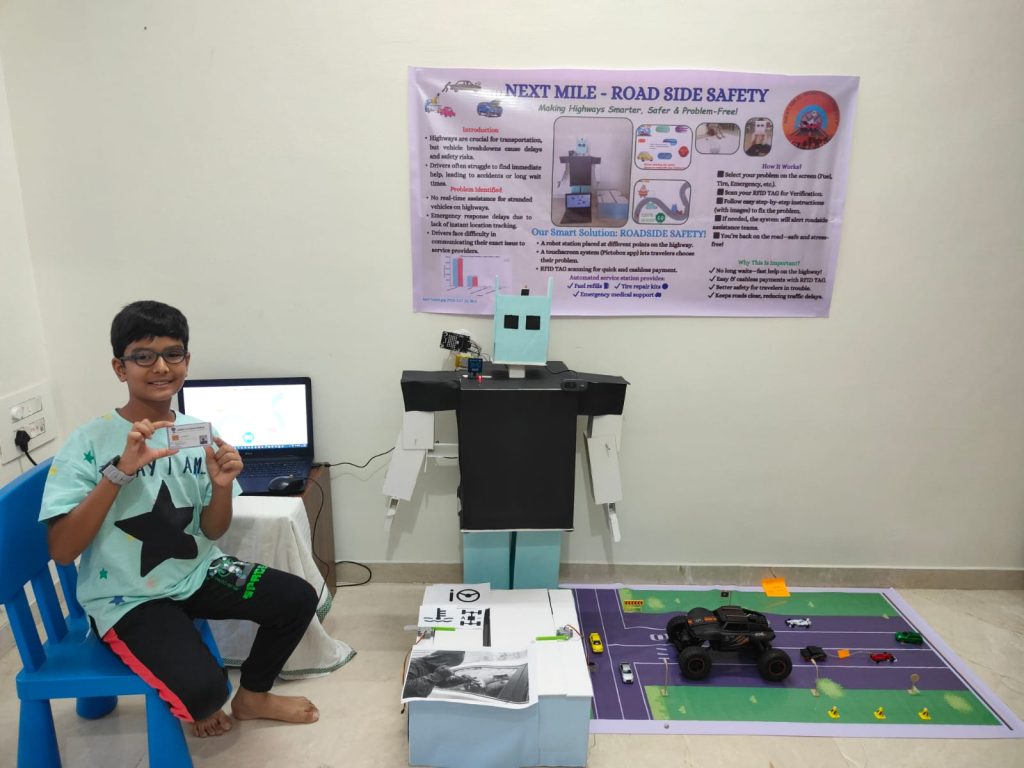
Road travel is an essential part of our daily lives, but highways come with safety challenges, especially for solo travelers facing emergencies. Next Mile – The Roadside Safety System is an innovative solution designed to provide real-time roadside assistance using AI, ML, and IoT technology.
Our system consists of a robot-like model powered by Quarky, a camera module, and an RFID system. The interface, developed using Pictoblox software, features four main functionalities:
Emergency Contact System: Provides verified roadside assistance numbers, preventing overcharging scams.
Step-by-Step Repair Guides: Offers instructions for car repairs like tire punctures and towing.
AI Chatbot Assistance: Helps troubleshoot vehicle issues by answering user queries.
ML-Based Security: Detects potential threats, records footage, and alerts nearby authorities in case of danger.
Additionally, an RFID-based payment system allows drivers to scan their license for fuel payments, ensuring a hassle-free experience.
This project enhances road safety, security, and convenience, making highway travel safer for everyone. By integrating smart technology, Next Mile provides a reliable solution for roadside emergencies, ensuring that help is always just a click away.
ML Based Solution to Pollution
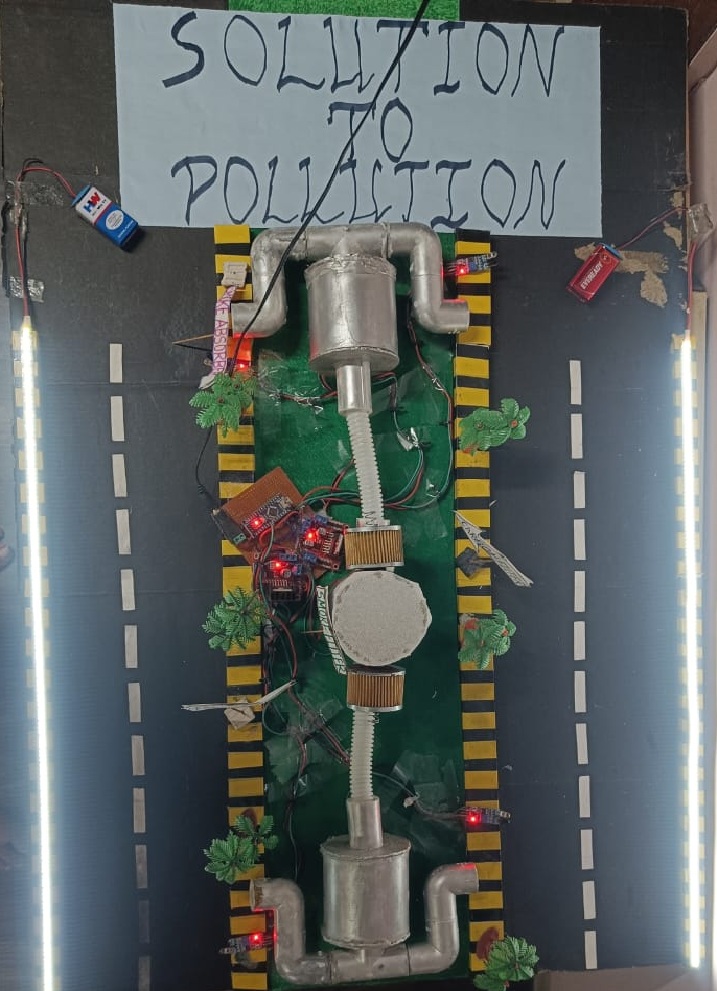
Vehicular emissions contribute significantly to air pollution, releasing harmful soot particles that degrade air quality and pose serious health risks. Traditional emission control systems lack real-time monitoring for clogged filters, leading to inefficient maintenance and increased pollution. Additionally, captured soot is typically discarded as waste, missing an opportunity for sustainable reuse. There is a need for an innovative solution that not only detects filter clogging in real time but also repurposes soot into a valuable product, reducing environmental impact and promoting circular economy practices.
Biomedical Cough Classifier
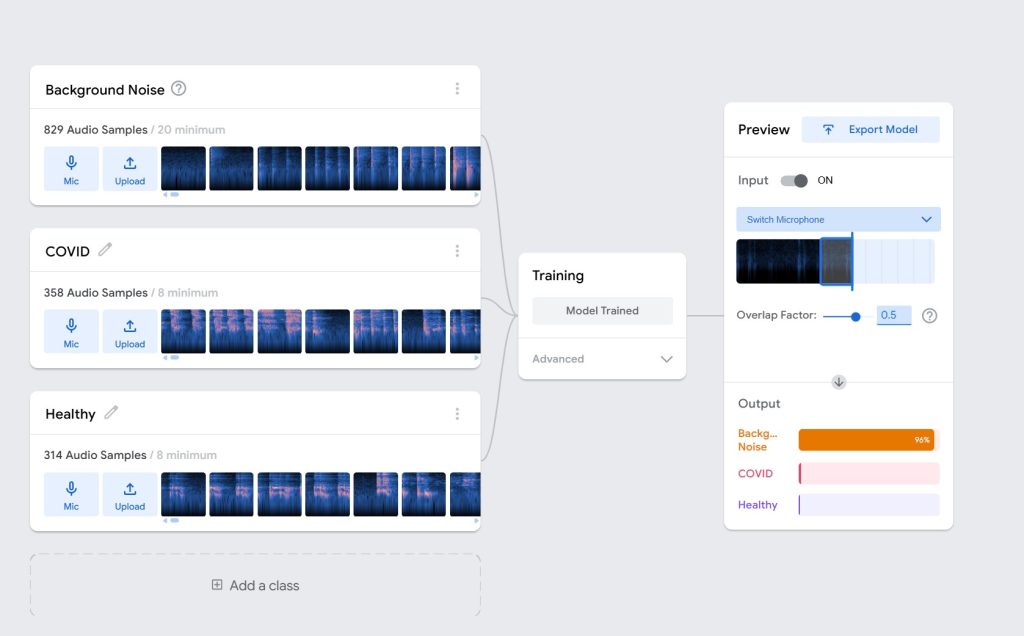
Final 200-250 word
The Biomedical Cough Classifier (BCC), “Cough once, know your risk.” By using machine learning and AI, our system can accurately identify COVID-like coughs, regular coughs, and background noise. Our idea was inspired by the ongoing challenges faced by people around the world—especially medical personnel fighting on the front lines and the lack of accessible care for patients. BCC was made to solve these challenges by providing high-quality telemedicine that allows patients to perform self-diagnosis from the comfort of their own homes. This not only reduces the number of instances in which doctors come into contact with contagious patients but also allows hospitals to utilize resources more efficiently for improved healthcare overall.
By utilizing the COUGHVID database, with more than 2,000 sample sounds, to train an AI model in PictoBlox’s machine learning environment, our system has an accuracy of over 90%. With the addition of a symptom survey, which asks users about signs such as fatigue, loss of taste, and shortness of breath, the diagnostic accuracy increases even more. The implementation of a cute bear in the user interface increases engagement and aligns with the Codeavour spirit!, with added severe covid detection.
Our project aims to advance the fields of innovation and medicine by contributing valuable cough sound data to expand the global database and inspire future innovators!
